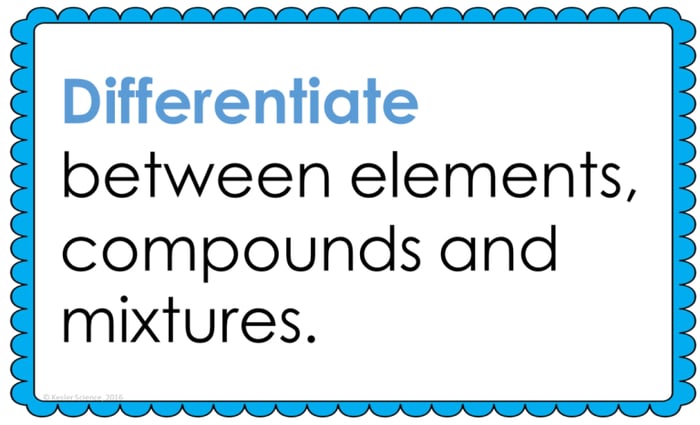
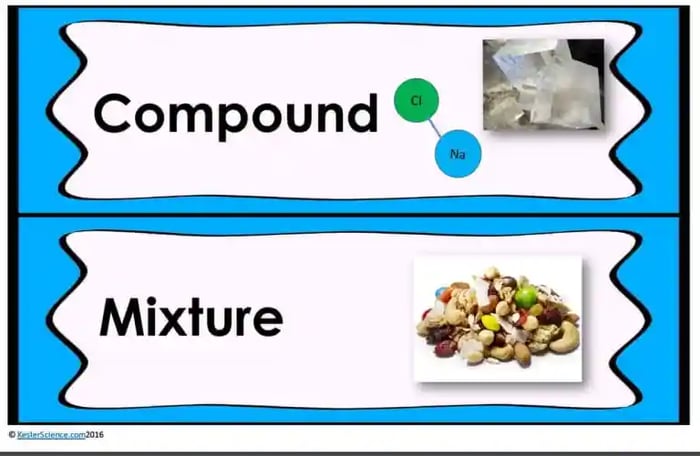 The teacher will help to clear any misconceptions about elements and compounds. A couple major misconceptions are students may incorrectly assume that only elements (not compounds) are pure substances. Also, students may incorrectly believe that pure substances are transparent, free from additives, and safe to ingest.
The teacher will help to clear any misconceptions about elements and compounds. A couple major misconceptions are students may incorrectly assume that only elements (not compounds) are pure substances. Also, students may incorrectly believe that pure substances are transparent, free from additives, and safe to ingest.
Estimated Class Time for the Engagement: 20-30 minutes
EXPLORATION
This student-centered station lab is set up so students can begin to explore elements, compounds, and mixtures. Four of the stations are considered input stations where students are learning new information about elements, compounds, and mixtures, and four of the stations are output stations where students will be demonstrating their mastery of the input stations. Each of the stations is differentiated to challenge students using a different learning style. You can read more about how I set up the station labs here.
EXPLORE IT!
Students will be working in pairs to learn how to tell the differences between elements, mixtures, and compounds. The best part about this, it involves LEGOS!!!! Task cards direct students to take a closer look at how elements, compounds, and mixtures are different from one another. The cards ask students to make observations and write their findings on their lab sheet.
WATCH IT!
At this station, students will be watching a three-minute video explaining the differences between elements, compounds, and mixtures. Students will then answer questions related to the video and record their answers on their lab station sheet. For example, how is a mixture different from a compound? How are the atoms in a compound held together? Classify three examples as either elements, compounds, and mixtures.
RESEARCH IT!
The research station will allow students to interact learning the differences between compounds and mixtures. Students will interact with a presentation explaining how compounds are different from mixtures. Students will also conduct interactive labs showing how to separate mixtures. At the end of the presentation, students will answer 6 questions to check for understanding.
READ IT!
This station will provide students with a one page reading about steel production. In the reading, students will discover how steel is created by combining certain elements. Students will also find out which three countries are the largest at steel production. There are 4 follow-up questions that the students will answer to show reading comprehension of the subject.
ASSESS IT!
The assess it station is where students will go to prove mastery over the concepts they learned in the lab. The questions are set up in a standardized format with multiple choice answers. Some questions include: Which of the following would not be a compound? What does the model represent? How many elements are in the mixture pictured? An element is a what kind of a substance?
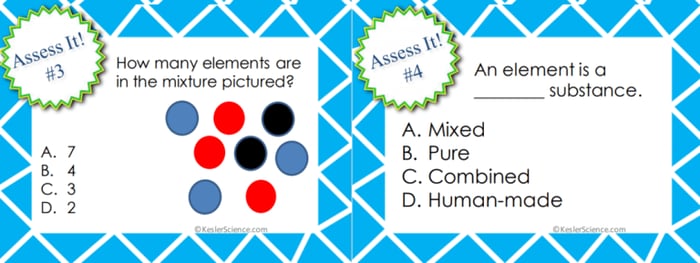
WRITE IT!
Students who can answer open-ended questions about the lab truly understand the concepts that are being taught. At this station, the students will be answering three task cards: Explain what a compound is and how you can tell one by looking at a chemical formula. How many different elements are present in C6H12O6? How do you know? Describe what an element is.
ILLUSTRATE IT!
Your visual students will love this station. Students will draw models of an element, compound, and mixture. Students will also be asked to be sure to correctly label their models.
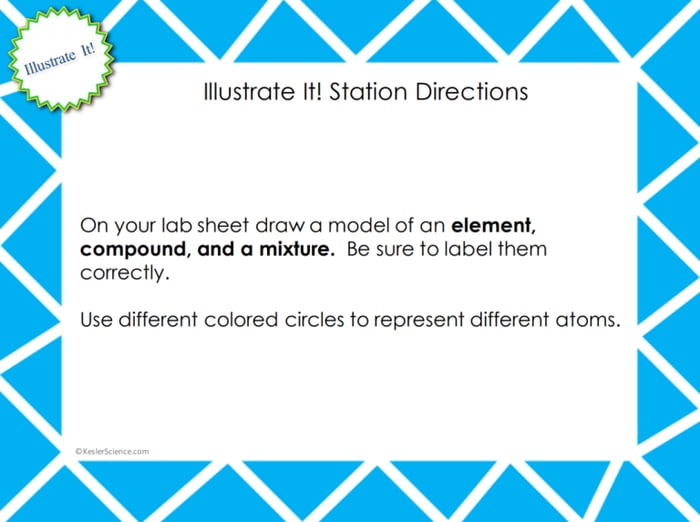
ORGANIZE IT!
The organize it station allows your students to place cards under columns that represent elements, compounds, or mixtures. Students will have 16 cards to place under the correct heading. Each card challenges the students to use prior knowledge to identify whether it qualifies as an element, compound, or mixture.
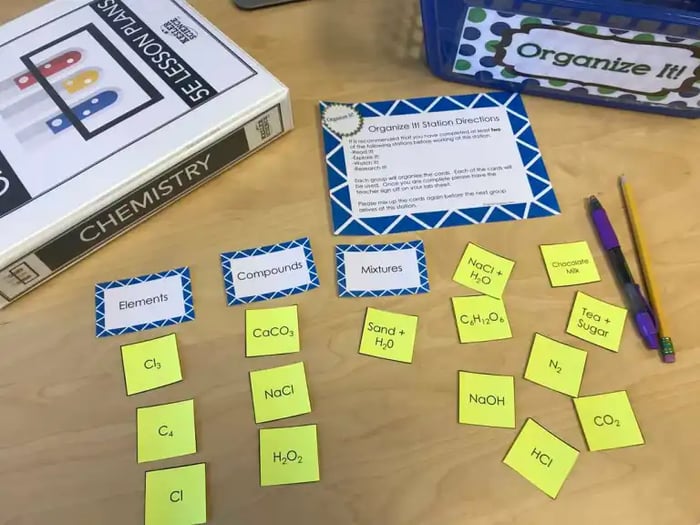
Estimated Class Time for the Exploration: 1-2, 45 minute class periods
EXPLANATION
The explanation activities will become much more engaging for the class once they have completed the exploration station lab. During the explanation piece, the teacher will be clearing up any misconceptions with an interactive PowerPoint, anchor charts, and interactive notebook activities. The elements, compounds, and mixtures lesson includes a PowerPoint with activities scattered throughout to keep the students engaged.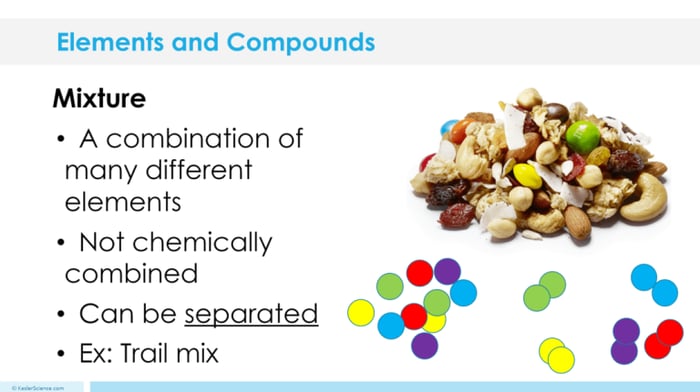
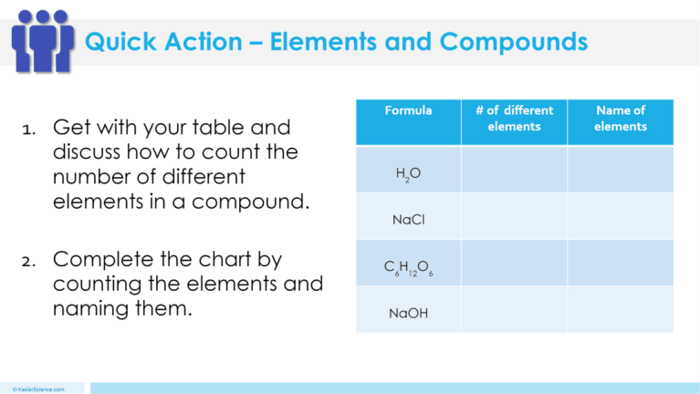
The students will also be interacting with their journals using INB templates for elements, compounds, and mixtures. Each INB activity is designed to help students compartmentalize information for a greater understanding of the concept. The elements, compounds, and mixtures INB templates allow students to focus their notes on learning identifying the amount of elements in the four spheres, notes on elements and compounds, and identifying elements from compounds.
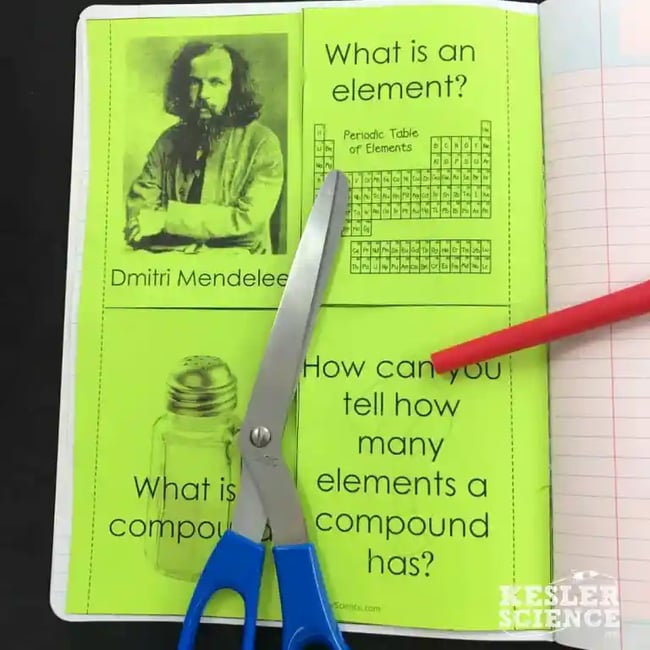
Estimated Class Time for the Exploration: 2-3, 45 minute class periods
ELABORATION
The elaboration section of the 5E method of instruction is intended to give students choice on how they can prove mastery of the concept. When students are given choice the ‘buy-in’ is much greater than when the teacher tells them the project they will have to create. The elaboration project will allow students to create a presentation to teach about elements, compounds, and mixtures. Estimated Class Time for the Elaboration: 2-3, 45 minute class periods (can also be used as an at-home project)
Estimated Class Time for the Elaboration: 2-3, 45 minute class periods (can also be used as an at-home project)
EVALUATION
The final piece of the 5E model is to evaluate student comprehension. Included in every 5E lesson is a homework assignment, assessment, and modified assessment. Research has shown that homework needs to be meaningful and applicable to real-world activities in order to be effective. When possible, I like to give open-ended assessments to truly gauge the student’s comprehension.
Estimated Class Time for the Elaboration: 1, 45 minute class period
DOWNLOAD THE FULL LESSON NOW
The full lesson is available for download from my TpT store. Save yourself a ton of time and grab it now.





